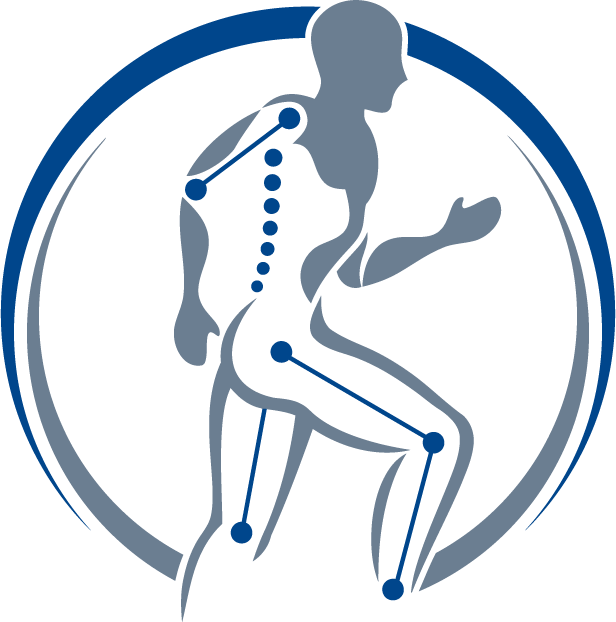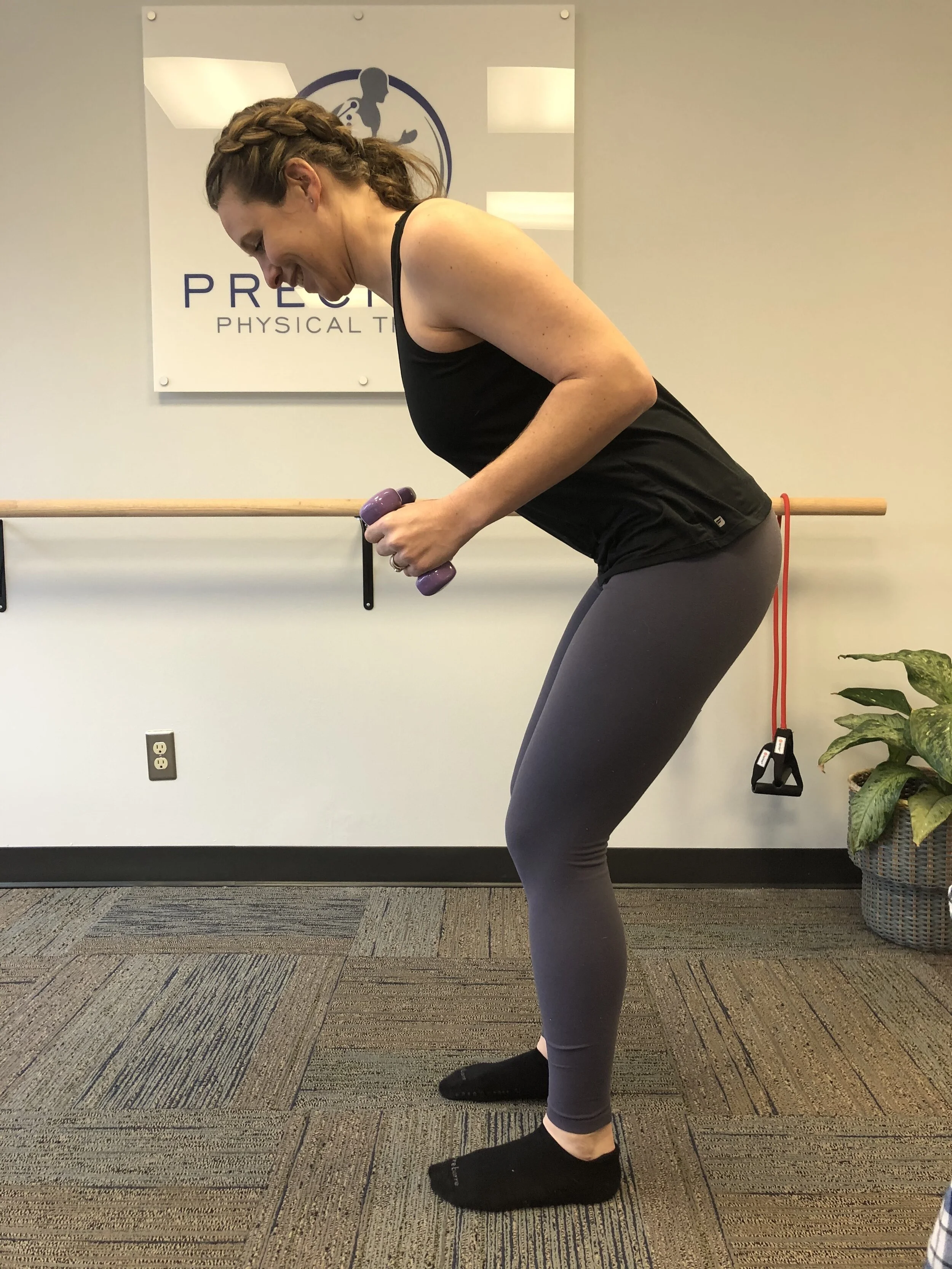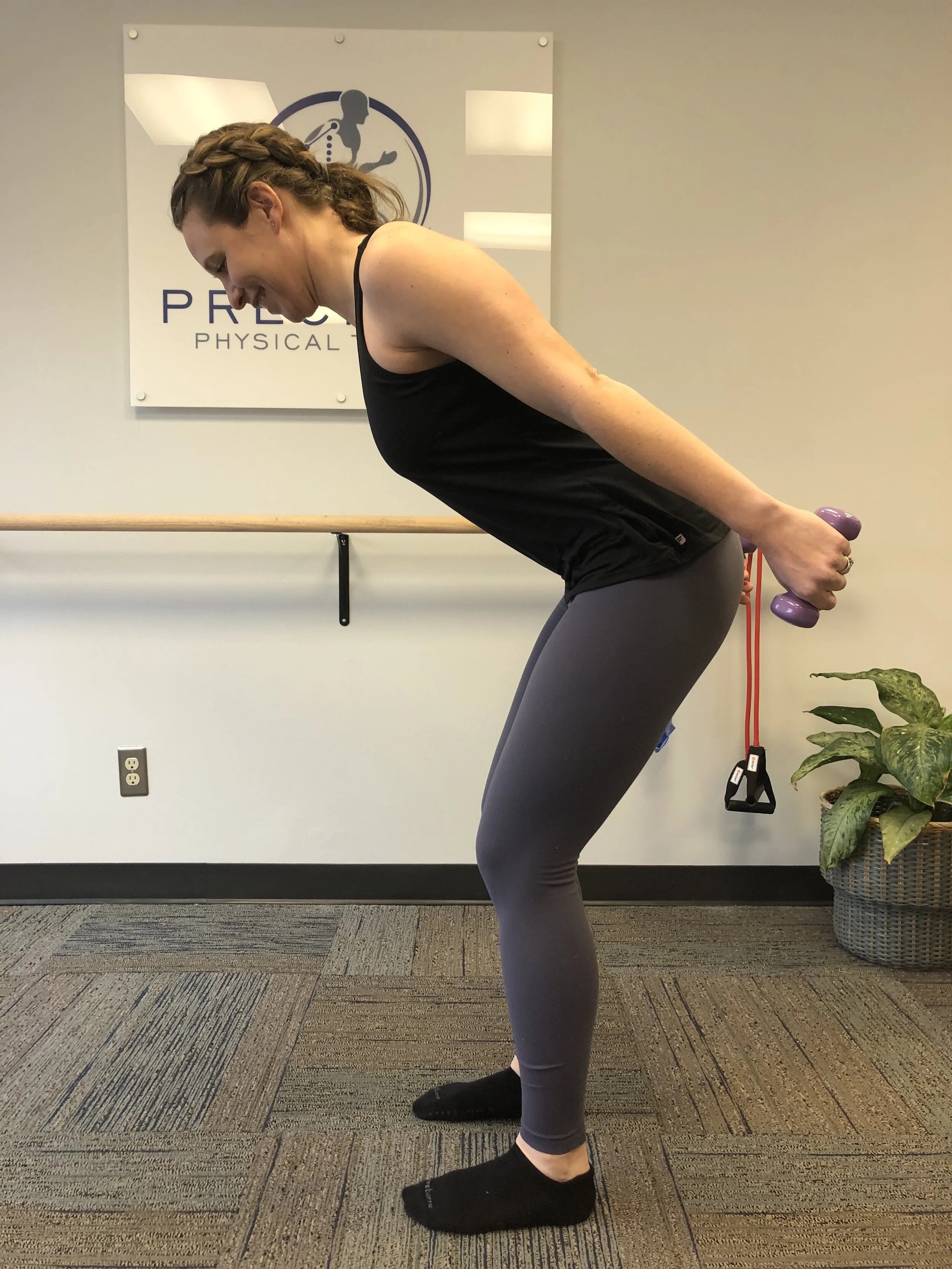Pure Barre: Control your hip hinge with your gluteals.
There are many exercises in your Pure Barre classes that require a hip hinge motion. Consider the arm (triceps and biceps) strengthening early in class; this requires the hips to move back, knees to slightly bend and the trunk to lean forward. A hip hinge movement is essentially the ‘deadlift’ movement that many weight lifters train at the gym. This movement is also required for leaning over a table, cleaning the counter and brushing your teeth at the sink. Practicing a good quality hip hinge during Pure Barre will benefit you across your day in many different activities.
During a hip hinge, the goal is to keep your back flat and sit your hips back. When you are in this posture the gluteals (buttock muscles) should contract to help you sustain the forward bend position. When the gluteals do not contract we tend to over use our hamstrings (back of the thigh) and back muscles. In physical therapy, being able to find (or contract) your gluteals during a hip hinge is an important component in treating many back pain conditions.
When you check your posture during class, you should assess your spine position. Is your back rounded? For most people, if your back is rounded it has to do with the habit of bending in the back more than the hips during your day and controlling the movement with the hamstrings instead of the gluteals. If your spine is rounded and you can’t seem to fix it, the problem may be related to your hip structure. If you can turn your feet and knees out slightly and improve your spine posture, you may have a hip structural variation.
Neutral spine posture, good hip hinge controlled with gluteals.
When you lean forward and control the lean with your hamstring, it will cause your spine to round. This is due to the attachment point of the hamstring underneath the pelvis.
When you lean forward and control the motion with your back muscles (paraspinals) the back will arch, increasing tension across the spine. If you are in this arched back posture, it is likely that your PB instructor will correct it. Our PB instructors are excellent at identifying and correcting this alignment during class.
When you lean forward controlling the motion from the gluteals, the knee will bend and the hips sit back, your back will be straight and the tension you feel will be in the buttock muscle. This motion provides the best joint mechanics for hips, knees, SI joint and spine. Because the movements in PB are mostly light weight, light resistance or body weight, you may not feel any discomfort with doing this movement incorrectly. But, if you are completing this movement incorrectly during your fitness activities, it often reflects the ways you are moving across your day. Poor hip hinge technique can cause pain and other problems with repetitive activities such as moving laundry, cleaning a table, leaning to pour water, or lifting groceries out of the trunk. Additionally, adding weight to a poor hip hinge posture often brings patients into the clinic with back pain.
Take the opportunity at PB this month to check out your hip hinge in the mirror and see if you can find your gluteal to control the motion. Carry that forward through your day! Thank you to PB for giving us the time and support to practice these movements that relate to our lives!
Ann & Jesse
This blog is not intended as medical or professional advice. The information provided is for educational purposes only and is not intended to serve as medical or physical therapy advice to any individual. Any exercise has potential to cause injury or pain if it is incorrectly done or is not the right exercise for an individual’s medical or physical problems. You should consult with a physical therapist or medical provider for individualized advice.












